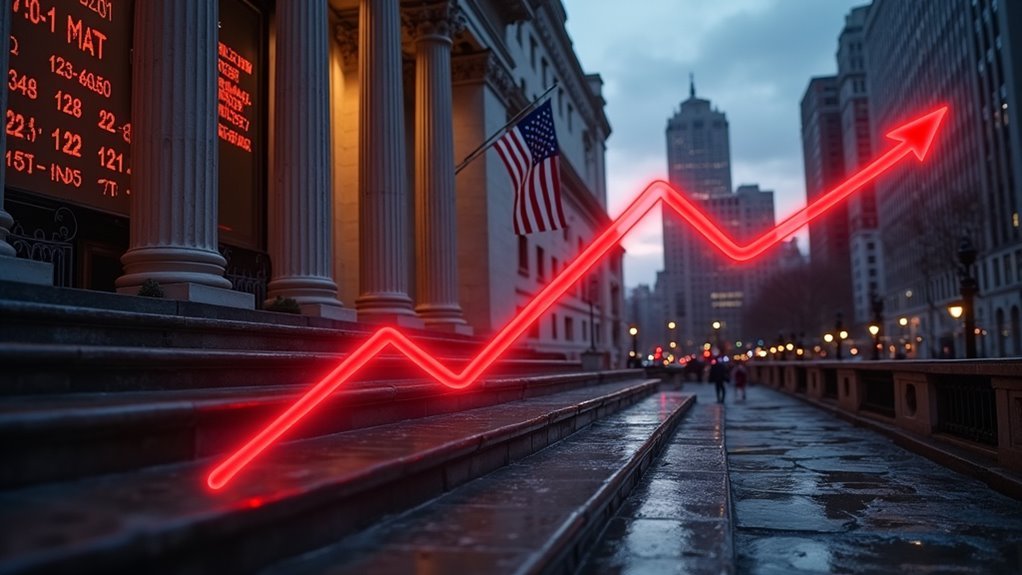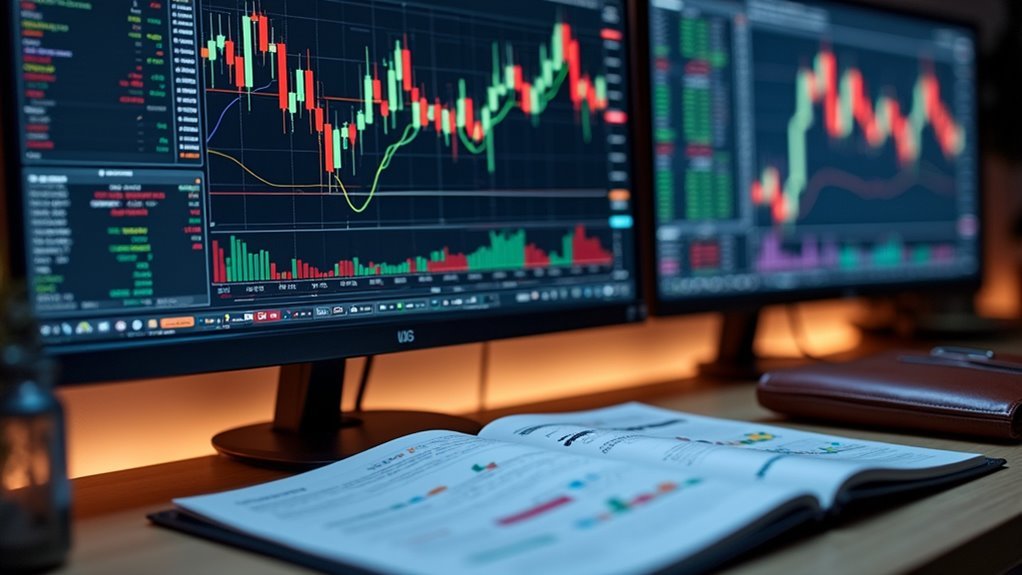As Donald Trump gears up for another potential term in the White House, his aggressive stance on tariffs is already sending shockwaves through Wall Street. The proposed 25% flat rate on steel and aluminum imports, set to take effect in March 2025, has investors clutching their portfolios and markets tumbling.
The S&P 500 has dropped 7.1% since Trump’s inauguration, and it’s sitting 9.3% below its all-time high from February 2025. The economic impact isn’t pretty. Sure, domestic production might get a boost, but consumers are the ones who’ll end up footing the bill. Markets hate uncertainty, and Trump’s throwing plenty of that around. FedEx’s recent 10% stock plunge highlights the growing corporate concerns about profit sustainability.
Markets are reeling as Trump’s policies drive the S&P 500 down, leaving investors anxious and consumers bracing for higher costs.
His tariff threats targeting Canada and Mexico – for reasons that aren’t even trade-related – are making things worse. Add in a broader trade confrontation with China, and you’ve got a recipe for market chaos. Achieving US aluminium self-sufficiency would require an unprecedented amount of energy – equivalent to six times what all US data centers use over five years.
The numbers tell a sobering story. The Federal Reserve’s GDP growth projection for 2025 has plummeted to 1.7%, down from 2.8% in 2024. Business investment is expected to flatline, and a slowdown in immigration isn’t helping the labor force grow. Some might say recession fears are overblown, but try telling that to nervous investors watching their retirement accounts shrink. Historical patterns suggest these market corrections typically last three to four months before showing signs of recovery.
The global implications are equally concerning. Russian energy exports are pivoting to China, India, and Turkey, while de-dollarization is picking up steam. International banking systems could face disruption as trade flows reroute outside Western banking channels.
Meanwhile, investors are scrambling to diversify their portfolios and manage volatility through various instruments. The policy uncertainty isn’t helping either. Nobody knows if Trump will actually follow through with his tariff threats, reverse Biden-era sanctions, or implement his proposed cuts to federal programs.
One thing’s clear though – the market doesn’t like surprises, and Trump’s economic gamble could end up costing investors billions. Sometimes the biggest risks come wrapped in the boldest promises.




